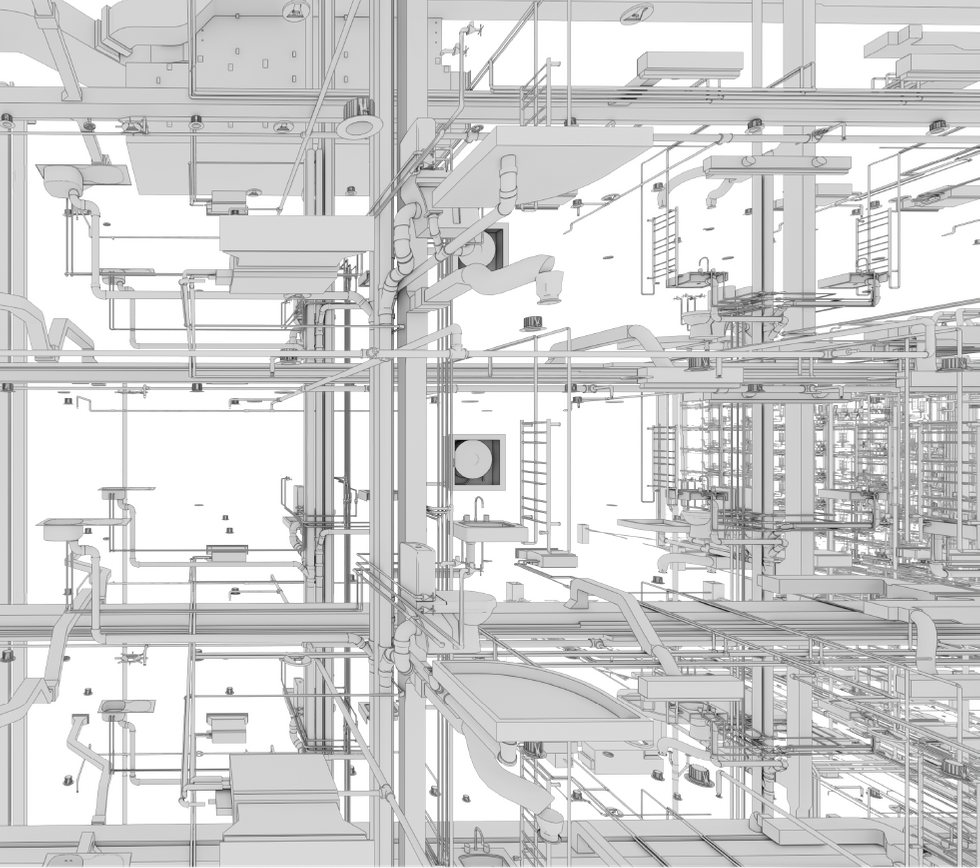MEP in Construction: Definiton & Innovations
With Enscape, modeling and visualization are finally united. Create high-quality visualizations without stopping your workflow.


With Enscape, modeling and visualization are finally united. Create high-quality visualizations without stopping your workflow.

In construction, MEP stands for “mechanical, electrical and plumbing” — and the engineering of those systems. Often hidden from view, MEP systems make building interiors safe and habitable. They regulate temperature and humidity, drain waste and rainwater, and power elevators and countless devices. The importance of reliable MEP systems cannot be overstated, yet their intricacy makes them difficult to describe.
To understand how MEP systems fit into overall building design and operation, clients and project teams increasingly rely on 3D virtual models and real-time visual aids.
Technology has disrupted the MEP industry in recent years. Into the mid-2000s, engineers and architects relied on time-consuming 2D drawing overlays to manually identify and prevent “clashes” between MEP systems. But the advent of 3D modeling software has streamlined MEP coordination as never before. Today, instead of layering hundreds of static drawings, engineers and builders use real-time virtual 3D building models to manage MEP in construction. To optimize workflow and handle requests for information (RFI), MEP professionals rely on 3D collaborative models that visualize MEP systems in real time.


MEP engineering has been revolutionized by building information modeling (BIM) and management. Today’s MEP engineers improve their speed and accuracy by sharing a 3D virtual model, or BIM, that includes tools for collaborative design, engineering, cost estimation, fabrication, and maintenance.
Leveraging the power of BIM tools, Enscape offers plug-in functionalities to visualize and explore MEP design in real-time. Prior to construction, Enscape can help communicate the details of MEP systems to clients with stunning vividness and accuracy. Just as importantly, these tools allow project teams to troubleshoot potential conflicts or “clashes” among systems, such as between ductwork and piping or structural beams. Finally, Enscape offers many options to export 3D renderings, enhancing BIM for MEP.
MEP design requires intricate precision and coordination. A single error in MEP design can cause a cascade of costly delays and repairs. That’s why MEP in construction can be a complex, time-consuming process, even though MEP systems are typically hidden from view.
From gas and electric heating systems to rainwater drainage systems, the main goal of MEP design is to make interior environments habitable and safe. Success is measured not only in terms of occupant comfort, but also in cost savings during a building’s service life. The key is to coordinate MEP systems with each other — and with the architectural design — to improve accuracy and efficiency in MEP design. The functioning of each part relies on the smooth overall functioning of the whole, and vice versa.


Things can quickly go wrong when MEP systems are designed in isolation, rather than in a coordinated manner. That’s why it’s important to keep your whole team updated with how and where each system is being installed.
Enscape’s best-in-class visualization features help you show your team and clients how your MEP installations work together. With Enscape’s convenient special views feature, you can intuitively visualize your MEP systems design during meetings. Enscape works with MEP software such as Revit and Sketchup to provide panorama views of 3D models to give your clients a better perspective on how MEP systems will look in their interiors. Thanks to Enscape’s real-time rendering and virtual reality possibilities, MEP in construction is more accurate, efficient, and user-friendly than ever.